For as many years as I have been growing flowers, I still can’t believe that I’ve only recently come to discover the great variety of China asters. Years ago, when we were growing for grocery store sales, the only varieties on the market were run-of-the-mill ‘Matsumoto’ and spray types. There was nothing beautiful or exciting about them, so I rarely included them in the garden. But a few years ago, I stumbled onto a German grower offering an incredible range of varieties that I had never seen before.
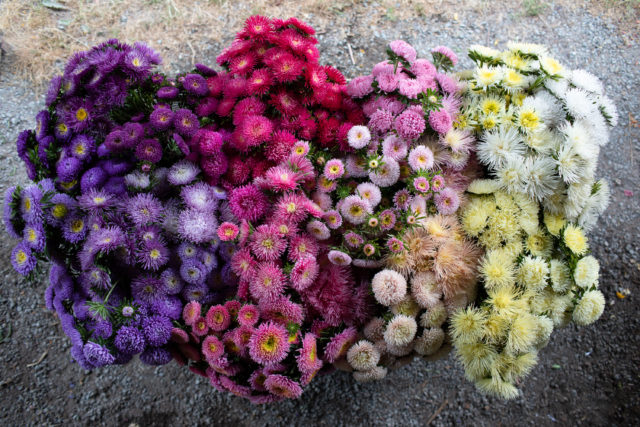
In addition to lasting an incredibly long time in the vase, China asters come in a dazzling rainbow of colors and a wide range of flower shapes and sizes, including huge feathered blossoms, sturdy sprays of miniature buttons, tight-domed flower heads, and soft rose-like blooms.
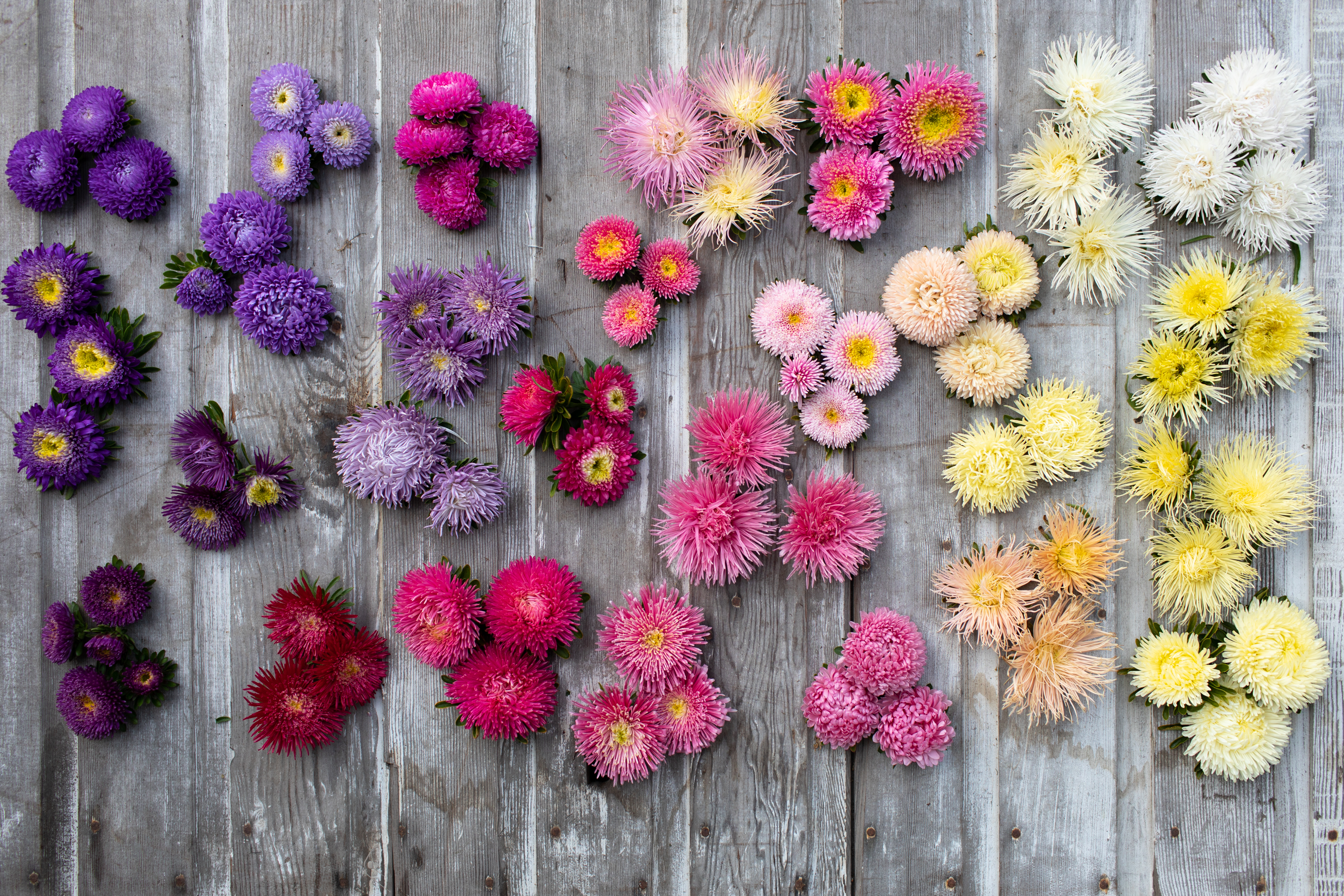 Sow seeds for China asters 6 to 8 weeks before the last spring frost and transplant out after the weather has sufficiently warmed. As with other cold-sensitive plants, such as basil, celosia, and zinnias, it’s important to wait to tuck these into the garden until all danger of frost has passed.
Sow seeds for China asters 6 to 8 weeks before the last spring frost and transplant out after the weather has sufficiently warmed. As with other cold-sensitive plants, such as basil, celosia, and zinnias, it’s important to wait to tuck these into the garden until all danger of frost has passed.
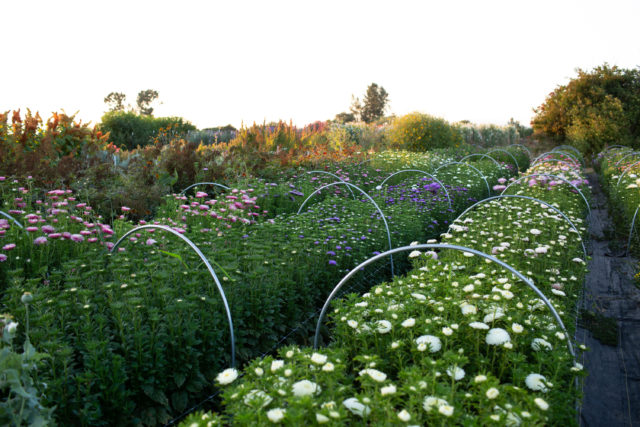
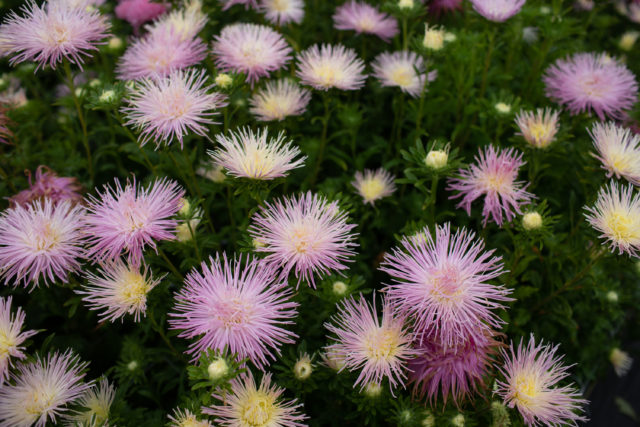
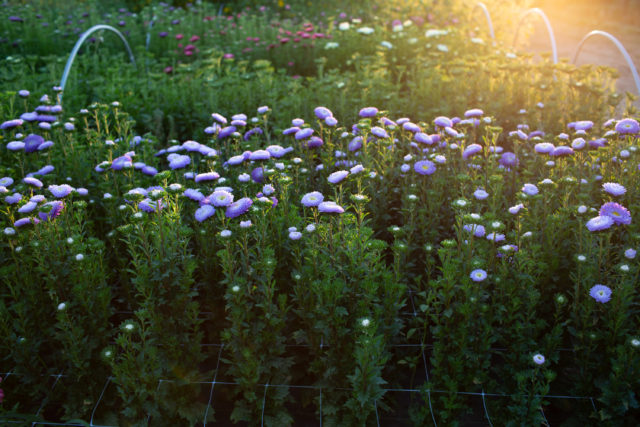
As the rest of the garden starts to wind down and fall apart, China asters come into their prime and, along with dahlias, help finish the flower season strong. They are a must-grow for late-summer and early-autumn bouquets.
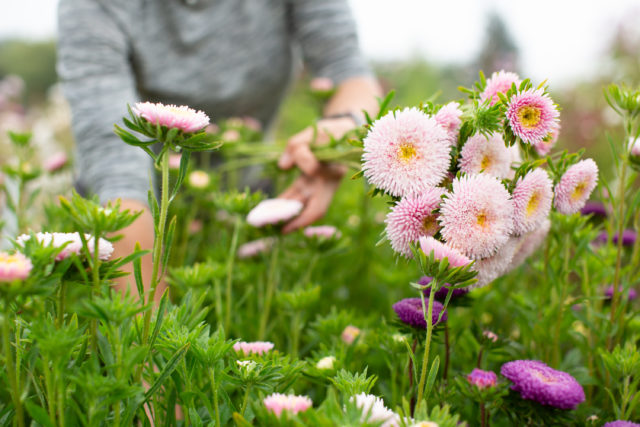
China asters are sensitive to wet weather, and the petals will brown if not harvested on time, so be sure to pick them regularly for the best-looking blooms.
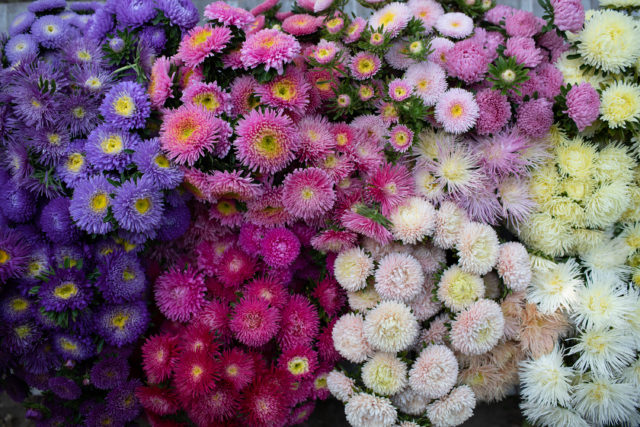
‘Harlekin Light Rose’ (pictured above, left) is a tall, feminine beauty smothered in an abundance of the sweetest soft, ballerina-pink blooms. Disk-shaped flowers have a fluffy appearance from the hundreds of quilled, tubular petals covering them.
The feminine ‘Tower Salmon’ (pictured above, center) features warm ballet slipper-pink flowers. Delicate ruffled blooms look like pretty, soft pillows.
The palm-size, mauve-pink blooms of ‘Valkyrie Pink’ (pictured above, right) remind me of the color of sea anemones. Buds are lighter than the mature flowers, giving plants a wonderful color range. Long, pointed flower petals resemble rosy cactus flowers, and as blooms are opening, the center petals are swirled.
‘Lady Coral Chamois’ (pictured above, left) has the softest peachy-blush blooms, giving this romantic beauty a glowing quality. Each plant is smothered in at least a dozen stems topped with ruffled, feminine flowers.
‘Tower Chamois Apricot’ (pictured above, center) is one of the most beautiful and well-loved asters and is a must-grow. Each vigorous plant is loaded with dozens of glowing peachy-pink blooms that are perfect for flower arranging and wedding work.
The striking palm-size blooms on ‘Valkyrie Chamois’ (pictured above, right) are stunning. Long, pointed flower petals resemble bird feathers, and as blooms are opening, the center petals are swirled.
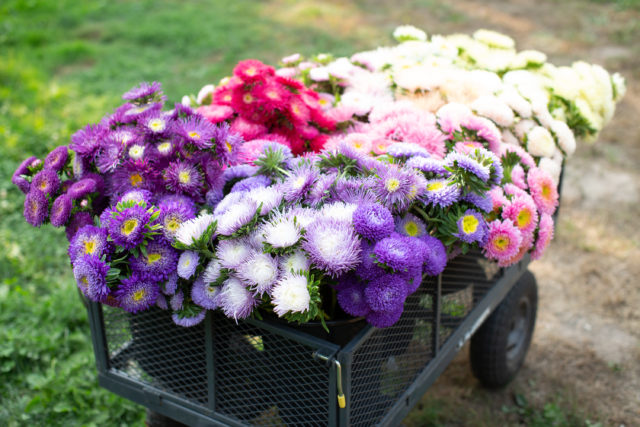
Do you grow China asters? Do you have a favorite variety? Please take a minute and leave a comment below about your experience growing them.
Please note: If your comment doesn’t show up right away, sit tight; we have a spam filter that requires us to approve comments before they are published.
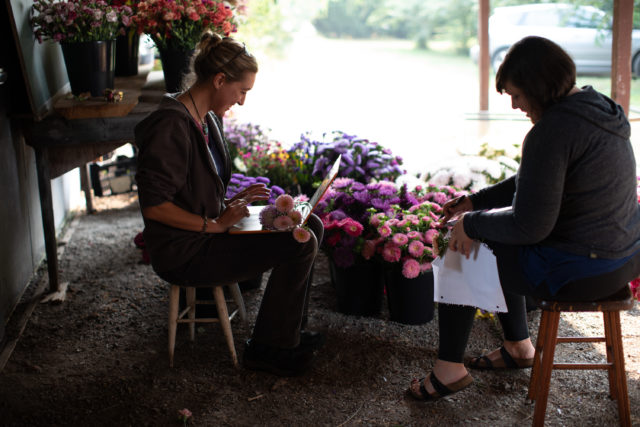
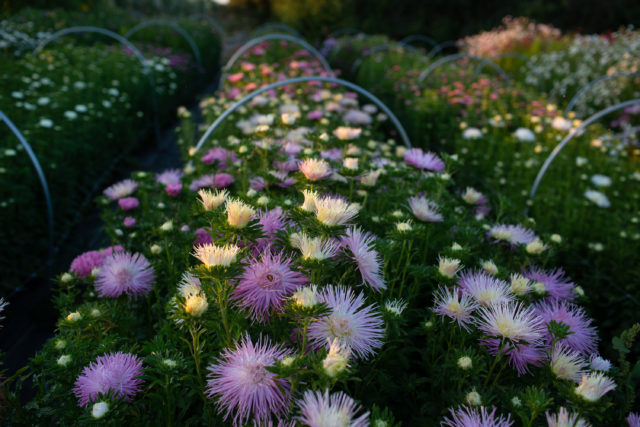
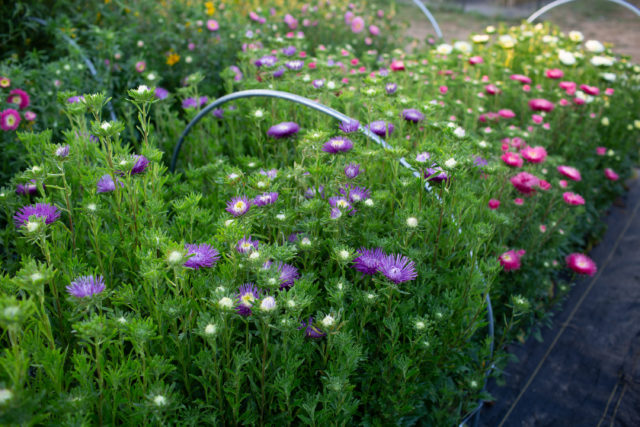
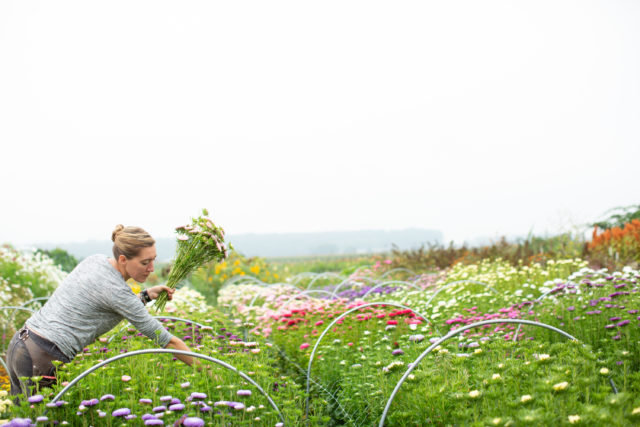
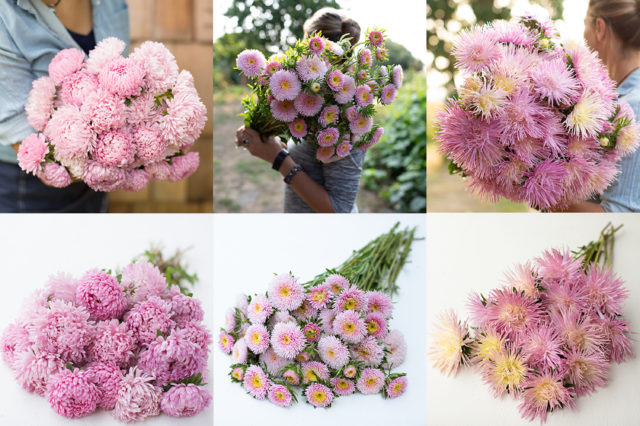
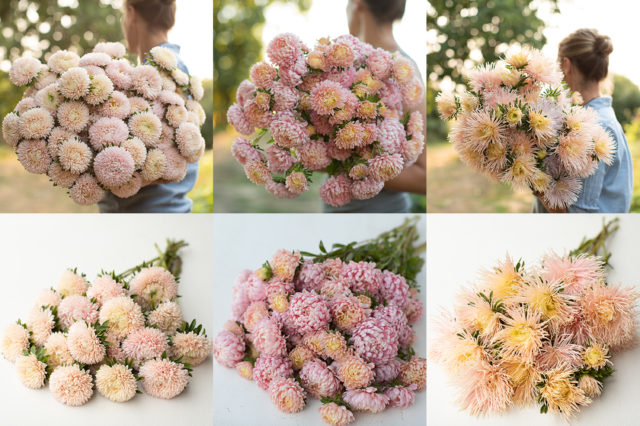
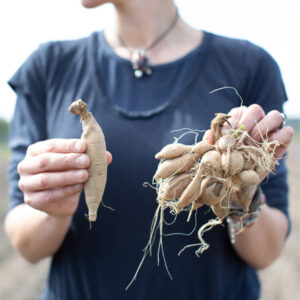
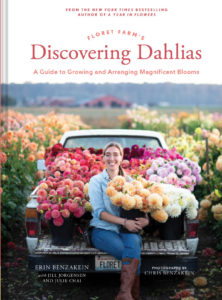
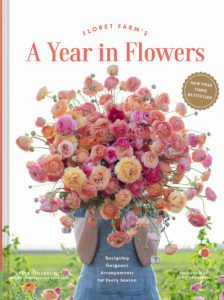
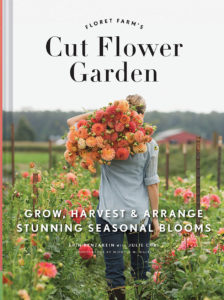

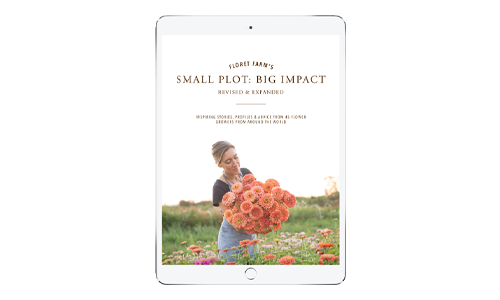
Melnee Benfield on
Gorgeous as always! Thanks so much for sharing your immense knowledge.
I am a Florist and do grow flowers, just not in huge quantities.
Which variety would you recommend producing the largest diameter blooms? When we want fluff, we want big fluff!
Thanks so much!
Melnee Benfield
Wooster Ohio